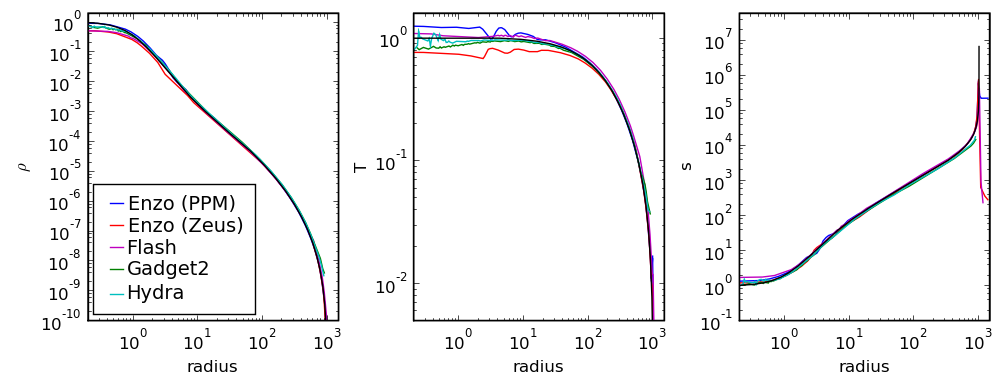The model used for the galaxy cluster is the King model (King 1966; Padmanabhan 2002), which was chosen because it possesses a finite radial cut-off, and is therefore a well defined problem for a code comparison. Its form is based on the distribution function:

where &epsilon = &Psi - 1/2 v2, is the coordinate change for the shifted energy, &rhoc is the central density and &sigma is related to (but not equal to) the velocity dispersion. The resulting density distribution of this cluster vanishes at the tidal radius, rt.Integrating over all velocities yields a density distribution:

Putting this into the Poisson equation results in a second order ODE which can be solved numerically. A c code that does this can be found [here]. This model has three independent parameters, the mass of the cluster, the tidal radius and the concentration c = log10(rt/r0), where r0 is the central or King radius. For this problem, we selected a concentration of 3, rt = 1Mpc and a cluster mass of 1014 Msolar. This results in a King radius of 1 kpc. Therefore, to successfully maintain hydrostatic equilibrium, the codes must be able to model the cluster out to 1Mpc while resolving the 1 kpc core. The profile of the cluster is analyzed at t = 1 Gyr.
